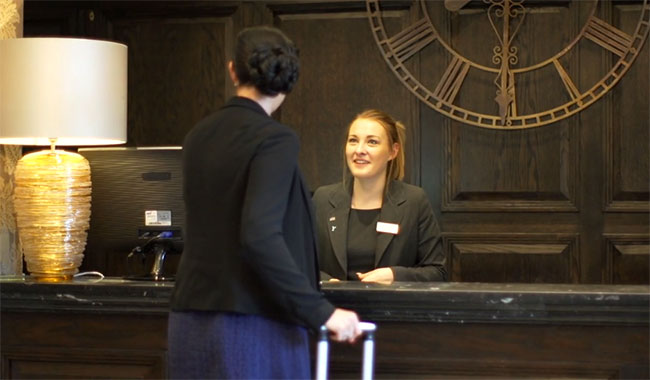Virtual reality has taken the world by storm with VR headsets gaining popularity as mainstream consumer products. Why should it not? Just put on a headset, and you are immersed in a whole new world. Just think about gazing at the Egyptian pyramids or taking a peek at details around the Eiffel tower? For video gamers, it is a dream come true. However, virtual reality is slowly gaining grounds in the corporate world too, particularly within the travel industry.
Virtual reality explained in brief
Virtual reality is essentially a technology that allows us to experience a digital world in a realistic manner. Images, sound and other sensory stimuli – everything is utilised to give the viewer an interactive and “virtual world-like” experience.
While virtual reality is used mainly in entertainment fields, marketers are seeing the opportunity to include virtual reality in their marketing stack for a better return on investment. For one, in the travel industry, prospective clients are often looking to experience the product before they go toward the purchase. Virtual reality renders them a satisfactory taste of what they might receive as a customer.
While customer reviews, catalogues, brochures, product descriptions and social media referrals might work for a business, the proof of the pudding is in the eating, after all. And none comes close to achieving this like virtual reality. Heard the ‘try before you buy’ phrase? This is the ultimate example of that.
And likewise, the global travel industry has gladly embraced this new technology with open arms.
A few companies dabbling with virtual reality…
In 2015, Marriot and Shangri-La hotels, with a Samsung VR headset, offered to give a world tour to its customers in their hotel rooms. A VR postcard was added that followed a traveler on their journey – The Andes in Chile, that bag market in Nigeria and the busy streets of China.
Thomas Cook recently tried virtual reality marketing in ten stores, giving virtual tours of New York, Singapore and Greece. This virtual reality marketing campaign pulled in $12 million in sales with a 40 percent return on investment. New York showed the highest improvement rate of 120 percent!
Thomson Holidays rolled out a virtual reality campaign giving a 360-degree view of the northern lights in Iceland. The video got a million views, and the tourism industry saw an additional positive influence. The ‘100% Pure New Zealand’ campaign, almost 20 decades old, was recently revamped with a new VR touch, giving prospective tourists a Kiwi land experience.
Waldorf Astoria, Edinburgh commissioned a VR tour of their hotel to show prospective corporate clients exactly what it might be like to hold an event there. Filmed and produced by The Marketing Café the video included staff members taking the viewer around the hotel as they pointed out key points of interest.
It is obvious that more and more travel and tourism companies are indulging in this new technology to provide their customers with a more fulfilling experience.
How you can use virtual reality in your business?
Hotel tours– this is big these days. Before the customer checks in, they can be given the complete tour of the hotel and the hotel rooms. This VR content usually sits on the main website of the hotel, where one can experience it with a supportive headset. However, in most cases, they are mainly 360-degree videos that go well with popular social media platforms and even with basic virtual reality technology like Google Cardboard.
Booking interface– much better than just pictures, text boxes, buttons and clicks. With a virtual reality booking interface, the prospective client gets a seamless booking interface where they can compare the options, get a ‘realistic’ feel of the package and check out key information, before finally making a purchase. The VR technology renders an almost tangible private tour to the client.
Travel experience– instead of talking about the Eiffel Tower, a hotel in Paris can “virtually” present a night-time view of the Tower to a tourist. Or maybe, that restaurant near Disneyland can connect with its customers with a 360-degree VR video of the roller coaster inside. Virtual reality technology can be a smart marketing weapon to draw visitors toward the experience and thus, to their business.
The global virtual reality market is expected to rise by 42.78% between 2015 and 2021, and will reach $40 Million by 2021. According to a study by Fullestop, 73% of Gen Z users are interested in VR and 53% of the adult population favour brands that support VR marketing.
So, the question is, “Are you in or are you out?”
As a business owner, this might be the right time to jump on the VR trend and skyrocket your sales.
However, it all starts with the right video content and for that you need a professional VR video production company that knows the ins and outs of the technology and can cater to your specific requirements.
The time is NOW.







